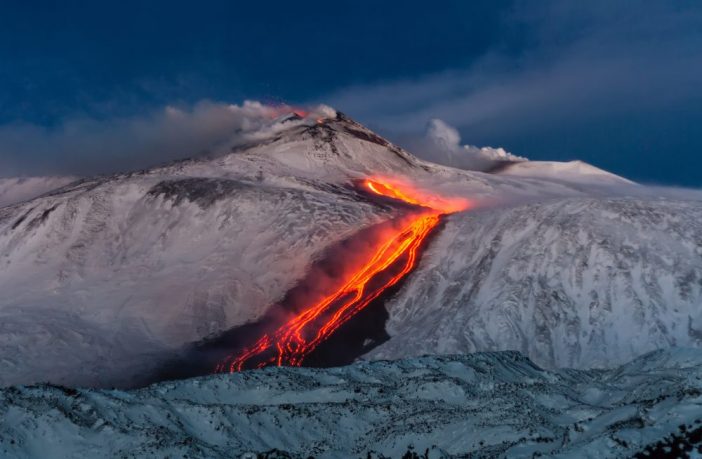Scientists at The Open University have discovered that the most active volcano in Europe, Mount Etna, is gradually sliding into the Mediterranean sea. Although scientists have seen sections of volcanoes move before, this is the first time they have observed the movement of an entire volcano.
Using 11 years of GPS measurements from all over the mountain, Dr John Murray of The Open University and his co-authors have discovered that the whole volcano is moving towards the sea at a rate of 14mm per year.
Lead author and Visiting Fellow at The Open University, Dr John Murray, explains:
“While 14 mm might not seem much, previous studies of long-extinct volcanoes found those sliding downslope in a similar way have resulted in catastrophic landslides later in their history. Constant movement could contribute to a major landslide along Etna’s coast, causing devastating tsunamis to surrounding areas. Whilst there is no sign of this happening to Mount Etna in the near future, continued sliding for hundreds or thousands of years could cause it to become dangerously unstable.
“The movement also presents an issue to volcanologists, with the motion interfering with signals indicating where the magma is and making it more challenging to monitor how likely the volcano is to erupt.”
The research, published in Bulletin of Volcanology, provides a valuable new way to monitor and predict long-term catastrophic potential scenarios caused by volcanos.
For more volcano related stories from The Open University visit:
Predicting volcanic eruptions – new technique developed by scientists
Bali volcano: expert comment by Prof David Rothery
Is Iceland’s tallest volcano awakening?
Volcanic emissions caused the warmest period in past 56m years



